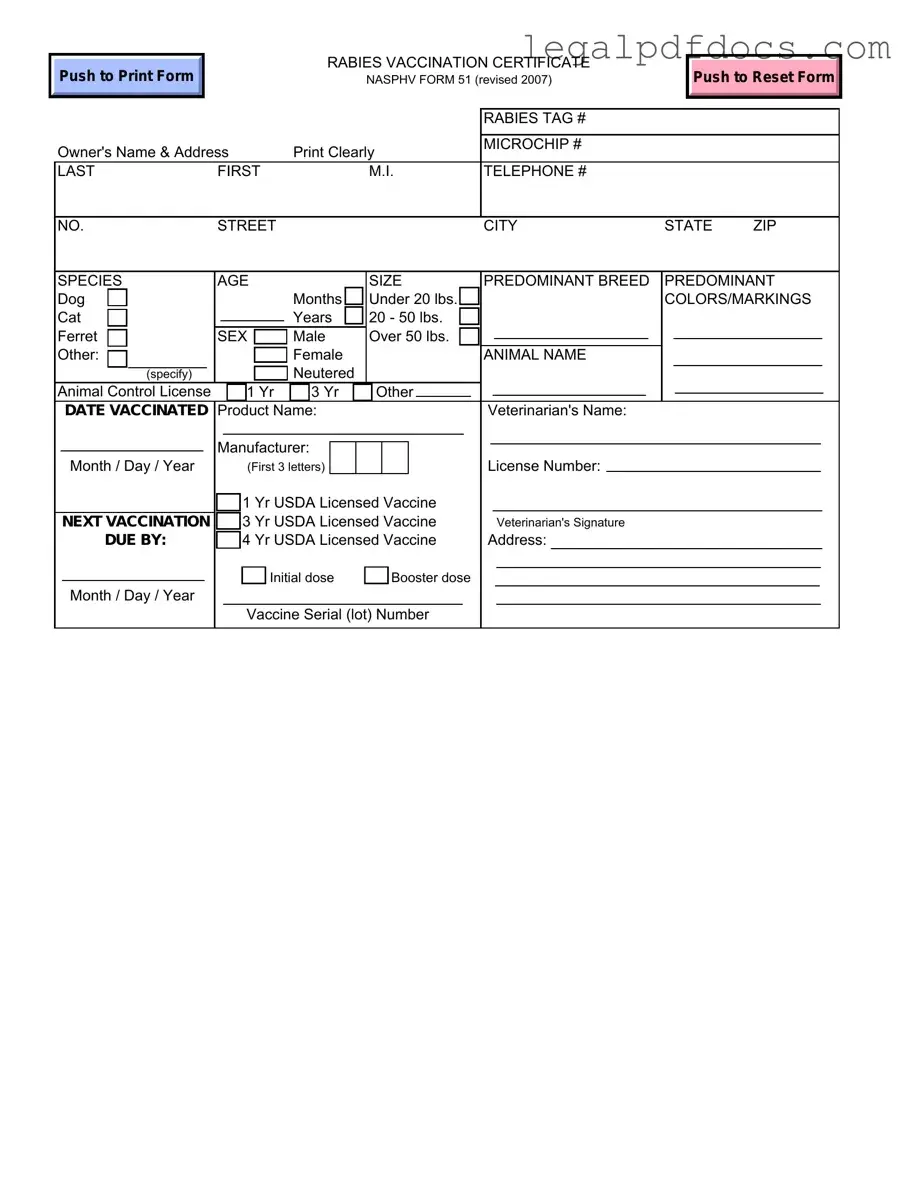The Rabies Certificate form is a crucial document for pet owners, particularly those with dogs, cats, or ferrets, as it provides essential information regarding the rabies vaccination status of their animals. This form, known as NASPHV FORM 51 and revised in 2007, includes various fields that need to be completed accurately to ensure compliance with local regulations. Key details such as the owner's name, address, and contact information must be clearly printed. Additionally, it requires specifics about the animal, including its species, age, size, predominant breed, and even unique identifiers like a microchip number. The form also captures vaccination details, such as the date vaccinated, the product name, and the veterinarian's information, ensuring that all necessary records are maintained. Importantly, it specifies the type of rabies vaccine administered, whether it is a one-year or three-year USDA licensed vaccine, and includes the veterinarian's signature to validate the information. Furthermore, the certificate outlines the due date for the next vaccination, which is critical for maintaining the health of the pet and ensuring public safety. By understanding the components of the Rabies Certificate form, pet owners can better navigate the requirements and responsibilities associated with rabies vaccinations.
